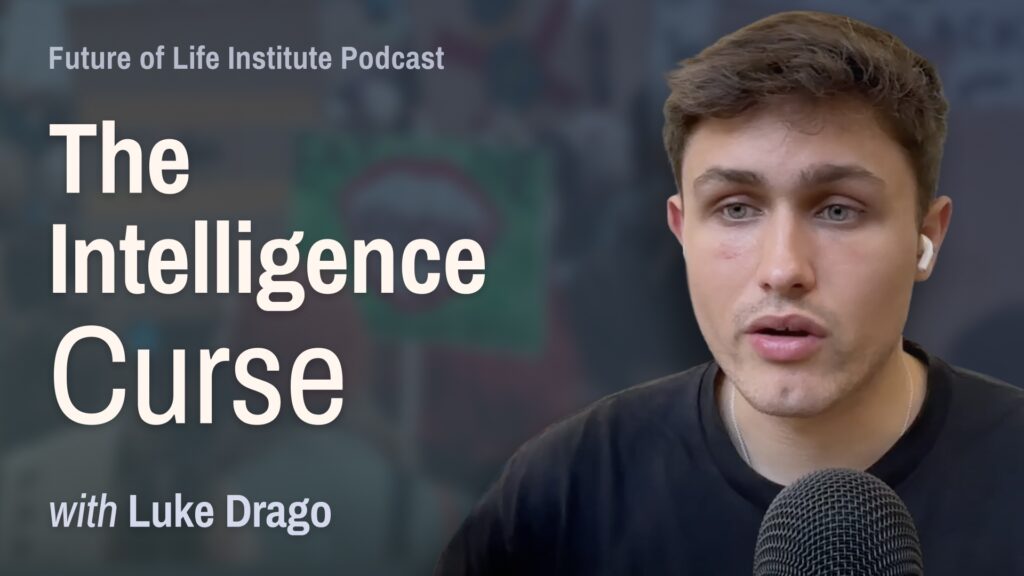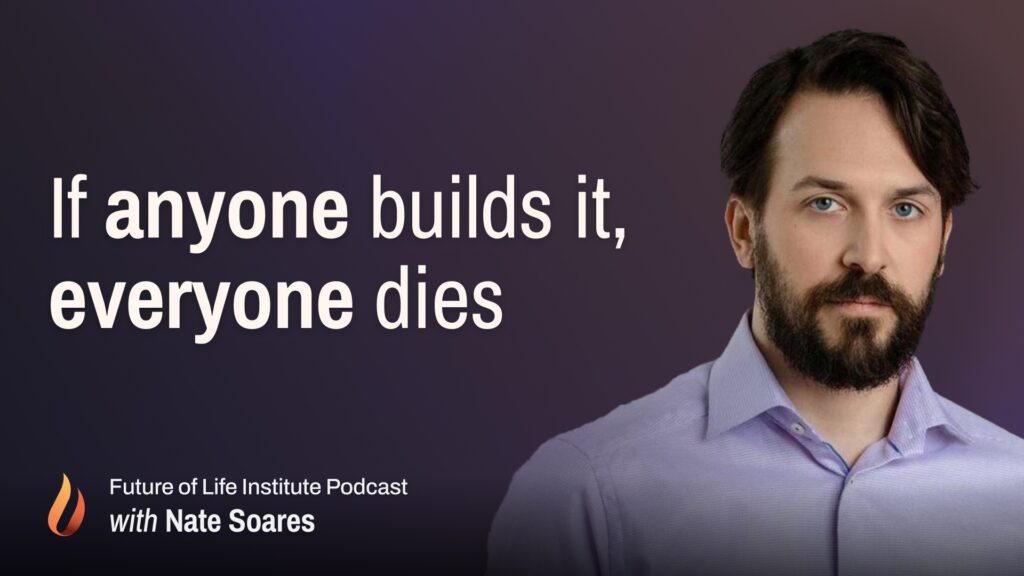Not Cool Ep 2: Joanna Haigh on climate modeling and the history of climate change
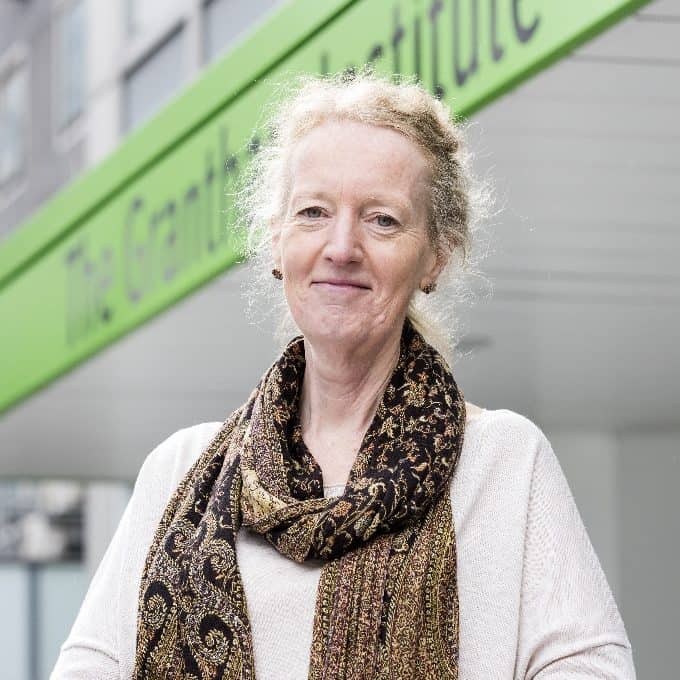
On the second episode of Not Cool, Ariel delves into some of the basic science behind climate change and the history of its study. She is joined by Dr. Joanna Haigh, an atmospheric physicist whose work has been foundational to our current understanding of how the climate works. Joanna is a fellow of The Royal Society and recently retired as Co-Director of the Grantham Institute on Climate Change and the Environment at Imperial College London. Here, she gives a historical overview of the field of climate science and the major breakthroughs that moved it forward. She also discusses her own work on the stratosphere, radiative forcing, solar variability, and more.
Topics discussed include:
- History of the study of climate change
- Overview of climate modeling
- Radiative forcing
- What’s changed in climate science in the past few decades
- How to distinguish between natural climate variation and human-induced global warming
- Solar variability, sun spots, and the effect of the sun on the climate
- History of climate denial
References discussed include:
- A two-dimensional calculation including atmospheric carbon dioxide and stratospheric ozone, Haigh & Pyle (1979)
- The Effects of Doubling the CO2 Concentration on the Climate of a General Circulation Model, Manabe & Wetherald (1975)
- UK Climate Change Act
There was a particularly notable paper in 1975 in which some scientists called Manabe and Wetherald did a doubled CO2 experiment, and looked at what happened to the climate. And they showed many of the features that we would recognize today in climate change: surface warming, more warming at the poles than at the equator, changes in the hydrological cycle and circulations. So, many of those general factors were understood right back then.
~Joanna Haigh
Transcript
Ariel Conn: Hi everyone, and welcome to Episode 2 of Not Cool: A climate podcast. I’m your host, Ariel Conn. I want to start by reading two sentences from an introduction to a paper in Nature that I found, frankly, to be quite shocking. They say, “Increased use of fossil fuels and deforestation have led to enhanced levels of CO2 in the atmosphere, with an increase of about 10% since the beginning of this century. This upward trend is continuing, and it has been predicted that the concentration may double in less than 100 years.”
Now, what I found shocking about this quote is not what it says, or that it contains anything particularly surprising. What startled me was that the paper was published in 1979, technically over 40 years ago at this point. And while news reports regularly highlight that scientists have understood climate change for decades, it was still really unnerving for me to see this so clearly written out.
And so we'll get more into this paper a bit later in this podcast, but first I want to introduce its lead author, Joanna Haigh, who has been at the forefront of climate science for many decades now, and was kind enough to come talk with us. Thank you.
Joanna Haigh: You're very welcome.
Ariel Conn: Jo is an atmospheric physicist and fellow of the Royal Society. She recently spent five years as Co-Director of the Grantham Institute on Climate Change and the Environment at Imperial College London, and prior to that she was Head of Imperial's Physics Department. She has published widely in the area of climate modeling and radiative forcing of climate change, and her work on how changes in solar activity influence the climate has been particularly influential. So, again, thank you so much for joining us, I'm really excited to talk with you.
Joanna Haigh: Thanks.
Ariel Conn: Before we get into anything else, I just want to know how you got into climate change, and dealing with these issues, before they were well-known to the public.
Joanna Haigh: I did a degree in physics, and I didn't quite know what to do when that finished, because I thought it was a bit dry. So I had a gap year, traveling, and what I was really interested in was the weather. So when I came back, I then studied for a doctorate in atmospheric physics, which was also quite dry, but it was on the sort of physics of how carbon dioxide and other gases absorb electromagnetic radiation, not ionizing radiation, in the atmosphere, and how that causes heating and cooling. That was my doctorate.
I was first of all working on the stratosphere — that's the bit of the atmosphere where the ozone layer is. But subsequently I realized the importance of the effects of these greenhouse gases in the lower atmosphere and how they might influence the climate, and its effect on us, more widely.
Ariel Conn: How long have people realized that this was an issue?
Joanna Haigh: So the greenhouse effect, in the sense that gases in the atmosphere keep the surface warmer than it would be otherwise, was first discovered by Fourier, the French mathematician, back in — I think it was 1820-something. That's been known about for a long time. Then, in about 1860, an English scientist called John Tyndall understood that it was mainly water vapor and carbon dioxide in the earth's atmosphere that was keeping it warmer than it would be without the atmosphere.
I think the real breakthrough in terms of climate change came at the end of that century, so about 1896, when Svante Arrhenius, a Swedish chemist, suggested that burning of fossil fuels would emit CO2 into the atmosphere, and that would cause the climate to warm. So he really suggested that for the first time.
But people didn't really take it very seriously, and despite the fact that global temperatures were warming in the early 20th century, there wasn't much work on that. In fact, it was somewhat dismissed. There was a guy called Guy Stewart Callendar in London in the 1930s who actually was the first one to show a correlation between the temperature rise and the CO2 rise. But still, there wasn't much serious work on that.
But then in the 1950s, the military wanted to do more on weather prediction, and so there was a development of weather forecasting models, and that really allowed us to model the atmosphere — not only for weather forecasting, but for modeling climate over longer periods.
Ariel Conn: Looking back at recent history, it's easy to see that it was not financially beneficial to really recognize the threats of climate change. Has that been the case this entire time, that scientists have struggled to get people to care about this issue? Or were there other roadblocks that scientists were facing in the 1930s or 40s?
Joanna Haigh: I think it wasn't really accepted as a problem. In fact, I think Guy Stewart Callendar thought that, if it got a bit warmer, that was all fine and good, that didn't really matter. But when the observations of temperature carried on going up, and people used the sort of calculations that Svante Arrhenius had suggested to show that, if CO2 doubled, then the temperature would go up by something like two or three degrees, people began to realize that it was quite serious. And then the development of the big computer models really allowed scientists to understand what it meant.
Ariel Conn: You've been very influential in the development of climate models over the years — this paper that I quoted from was actually about a two-dimensional model that you created — and I was wondering if you could walk us through a brief history of climate modeling as well.
Joanna Haigh: Yeah, sure. So when we talk about a climate model, what it is is a representation in computer mathematics of the physics of the atmosphere. The very simplest one that you can think of is called an energy balance model, and you just look at the solar energy coming in and the heat energy going out, and you just can calculate what the temperature would be, given certain amounts of greenhouse gases in the atmosphere. So that's a very simple, first-order calculation that you can do.
You can then go one step more complicated and actually give the atmosphere a sort of vertical structure, so you've got temperatures at different levels in the atmosphere, and you can start to calculate the transfer of heat between different levels in the atmosphere and what that means for the temperature.
And then there was developments from that, and the sort of 2D model that I was using back then in the 70s was a model in which the dimensions were latitude and height. So if you imagine that as a vertical slice through the atmosphere, there was no representation of longitude at all, but what we could see was the winds blowing through the atmosphere and the circulations in the atmosphere, and how those changed in response to various forcing factors, including greenhouse gases.
Ariel Conn: In your introduction, we talked about radiative forcing. Can you just quickly explain what forcing means in climate?
Joanna Haigh: Sure. There's a natural balance between the solar energy that's absorbed and the heat energy that goes to space. And, all else being equal, if you have an annual average and there's no climate change, those two things balance out, and we have a nice, equitable climate.
But if something changes, so if for example you were to suddenly change the amount of solar energy coming into the planet — if suddenly the sun got hotter and put more energy into the planet — that would be called a positive radiative forcing. So when the climate then adjusts, it has a warmer temperature. So a positive radiative forcing will give you a warmer temperature.
And CO2, by completely different mechanisms, will also give you a positive radiative forcing. So if you just suddenly injected a load of CO2 into the atmosphere, that would disbalance this equilibrium. It would initially stop some radiation escaping to space, so there would be more sunshine coming in and less going out, and that would give you a positive heating effect. Then the atmosphere adjusts, it gets warmer, it emits more heat to space, and so there's a new equilibrium, but it's at a warmer temperature than it was before. That's just an example of the effects of radiative forcing.
Ariel Conn: So, sticking with this 1979 paper for a minute, how much of what we recognize today as a problem was really well understood 40 years ago?
Joanna Haigh: So I was working on the stratosphere; There were other scientists, particularly in the USA, who were working on the effects of climate on the surface. And there was a particularly notable paper in 1975 in which some scientists called Manabe and Wetherald did a doubled CO2 experiment, and looked at what happened to the climate.
And they showed many of the features that we would recognize today in climate change: surface warming, more warming at the poles than at the equator, changes in the hydrological cycle and circulations. So, many of those general factors were understood right back then.
Ariel Conn: Okay. And then what's changed in those few decades? One of the other things that I read in your 1979 paper that I was amused by was that 3D modeling would obviously be better, but there wasn't enough computing power. We clearly have a lot more computing power today. How have things changed?
Joanna Haigh: In running these computers you always have to decide what it is that you're really most interested in finding out, and what compromises you can make in the sense that you've only got a limited amount of computing power. Back then, the sort of work that I was doing included quite comprehensive representations of atmospheric chemistry.
So we were interested in the ozone and what that was doing, and how temperature changes affected all the species in the stratosphere. So if you've got a comprehensive chemistry scheme, you can't afford to have the sort of three-dimensional winds and structures like that. However, if you're more interested in the sort of weather and climate, and you're not so bothered about the chemistry, then you can do a 3D model with the full latitude, longitude, and height grid.
What's happened since then is both the number of processes that you can include in the model has increased. So for example there's a much better representation of clouds, there's a full representation of the ocean circulation underneath the atmosphere, there are representations of the interaction of the atmosphere and plants and the land surface — all of those extra processes that we weren't thinking about or doing in those days.
And also what's happened of course is, because of the huge increases in computing capacity, we're able to do these things much faster and at much higher resolution. Back then, the horizontal spacing would've been hundreds of kilometers, or more — thousands of kilometers. And now, depending on which model you use, it can be down to, say, 10-100 kilometers.
So if you imagine you've got to represent all the different processes that are going on in the atmosphere — you've got the wind, you've got the rain, you've got the clouds, you've got all these things going on — if you look at the sky now, and you can see all these things going on, how can you possibly represent that in a model that's essentially like boxes?
I don't know whether kids who play Minecraft — that's a very popular game with young kids here — you can imagine a Minecraft version of the atmosphere with all these sorts of blocks. That's like a climate model. So the smaller you can get the blocks, the better you can represent what's going on.
You've got differences across the globe, you've got it warmer in some places and cooler in others, and again, through the atmosphere, warmer at some levels and colder at other levels. And then how that affects all the winds that are blowing, and the clouds that are forming, and the rain that's happening, and all the rest of it. So the increasing computer power has enabled us to do all these processes at increasing resolution and increasing detail.
Ariel Conn: So that's the type of work — You were creating these models to look at how things changed. You said in the earlier paper you were looking at the stratosphere; Is that where most of your research has happened?
Joanna Haigh: Yes, so that 1979 paper was looking at how increasing levels of carbon dioxide affected ozone in the stratosphere. You've probably heard about ozone in the context of the Antarctic ozone hole, and it's sitting up there and it's very important for heat balance and for protecting us from UV and all the rest of it.
The idea was that as carbon dioxide increases, it warms the lower atmosphere due to the greenhouse effect that we've just been talking about. But actually in the upper atmosphere it cools, because it can just emit more heat to space. And as it cools, the chemical reactions that destroy ozone go slower, so more CO2 means more ozone up there. That's what we were looking at, which was quite an interesting piece of work.
But then we went on to further study the combined effects of increasing CO2 and chlorofluorocarbons. So as you probably know, the nasties that caused the ozone hole are these chlorine-containing compounds. Now, we didn't know about the ozone hole back in those days, but we did think that chlorofluorocarbons might be harming the ozone layer. And so the more of these CFCs you put up, they're killing off the ozone.
So the work that I was doing then was saying, "What happens if you have more CO2 and more CFCs? More CO2 gives you more ozone, more CFCs gives you less ozone. Can you just shove them all up together and get back to where you started?" And what we discovered was absolutely not. It's a very nonlinear thing, and the CFCs win out, so they carried on decreasing the ozone even though the temperatures were going down.
So that was a nice piece of work, and I enjoyed doing that at the time. But it's not directly related to climate change in terms of what's going on in the lower atmosphere. What I've done subsequently is looked at radiation effects on the lower atmosphere, and in particular how changes in the sun can influence the lower atmosphere.
Ariel Conn: I wanted to ask you about that because I was interested to know what the connection is between looking at how the sun influences the atmosphere with respect to the fact that climate change is a human-induced problem.
Joanna Haigh: Yes, absolutely. So when we talk about climate change, of course climate has changed in the past hugely. We've had Ice Ages, and we've had much, much warmer periods millions and millions of years ago. And there's been a lot of work done on what causes the changes in climate in history, and that's an interesting scientific topic.
So when we start seeing what we now call global warming — recent warming — the question is, is that due to natural factors such as those that have happened in the past, or is it due to human activity? So you really need to understand the natural factors to ascertain to what extent they are causing recent warming or not.
So I was working on how changes in solar activity could influence the climate. There was a paper published about 1980 that showed a very strong correlation between sunspot numbers and surface temperature, and it caused a huge fuss because it was suggesting that all the global warming, climate change, was due to the sun.
And so of course, if that was true, it would mean we didn't have to worry about chucking carbon dioxide into the atmosphere; We could carry on happily burning fossil fuels, and it was all down to the sun, and we couldn't do much about that, so that was it. So what I was working on was actually what the sun could and couldn't do in terms of influencing the surface temperature.
Ariel Conn: And what did you find?
Joanna Haigh: In terms of the total energy of the sun coming into the climate, it varies a very small amount: about a tenth of one percent over a sunspot cycle, or over longer decadal periods. That could influence the surface temperature by perhaps a tenth of a degree or something — a very small amount. So that actually was well established, that we can't cause global warming just by changes in solar output.
But then I went on to think a little bit more. Because of this work that I'd done previously on stratospheric ozone, I thought a bit about other changes in the sun. When we talk about sunspots, they're just a measure of activity, they don't tell you anything about the physics of what's going on. But actually what you have is, when there's more sunspots, the sun's actually putting out more energy, it's putting out this tenth of a percent more total energy.
But what I did was I looked at the spectrum of that energy. As you know, in light there's red light going through to blue light in the spectrum, but at shorter wavelengths there's ultraviolet. And what happens with the sun is, when it's more active, it only puts out this very small amount in visible or total energy, but its amounts of ultraviolet are hugely increased. So that then affects the ozone, because that's what's causing the ozone to be there in the first place.
So that was what I thought was really interesting, was looking at how changes in solar ultraviolet can affect the ozone. I did some work on that, and then I did some work with a big climate model, looking at how the coupling of changes in stratospheric ozone can actually influence the climate below.
What we found was that it wasn't that you get global temperature changes in response to the solar UV, but you can get patterns of response. So you can get shifts in where the stormtraps are, and changes in the patterns of the weather rather than a global warming effect. That was to help people interpret global or local climate records in terms of what was forcing the changes in different parts of the world.
Ariel Conn: One of the things that is an issue in trying to explain climate change is that, yes, the whole world might be warming, but certain sections are going to be feeling the impacts of that differently, and so there might still be big snowstorms in places, or places that didn't use to have snow might start getting snow. Is that research you're talking about connected to this idea, then?
Joanna Haigh: Only in a very general sense, that what it's saying is that global warming isn't the whole picture. It's bad enough, but you can get regional patterns that are quite different. I think what you're describing there is changes in extreme weather events, and we're beginning to see those already in response to global warming. But I haven't actually done much work on that.
Ariel Conn: Okay. A lot of this sounds like stuff that you did earlier on. What's some of the work you've done in the last decade or so?
Joanna Haigh: Looking at particular factors how the sun affects the climate. With colleagues I've been running very big climate models and looking to see, again, the patterns of change that the solar influences can do. We've been concentrating on the Tropical Pacific, and also in the North Atlantic Ocean, what the sun can do. And it appears to influence the El Niño in the Tropical Pacific, and also the North Atlantic oscillation, which is a natural oscillation of weather in the North Atlantic.
So, as I said, this is quite important in terms of understanding regional changes in climate introduced by natural factors, to include those in interpreting what's happening in response to greenhouse gases.
Ariel Conn: How do climate scientists who are trying to better understand the human impact use the research that you've done?
Joanna Haigh: The work that we've done has encouraged, or in fact determined, that the people who run the big climate models to look at the surface climate do need to include a representation of the stratosphere and a representation of ozone in terms of heating and cooling the stratosphere, because that actually has an influence on the atmosphere below. There's been a big change in the sense that almost all weather forecasting and climate models now include a representation of the stratosphere higher up, whereas before it wasn't considered necessary.
Ariel Conn: Okay. So I want to start moving into questions about what we do moving forward, but before I do that, are there other aspects of your research, or anything else, that you think is important for us to understand about what's happened with the science over the years?
Joanna Haigh: I think it's interesting talking about climate skeptics not believing about global warming. Earlier, there were solar skeptics who didn't believe that the sun was influencing the climate and the weather very much, at least not on human timescales. In the Victorian times there was a thing called sunspottery, which was perceived to be cranks, almost like astrology.
And in fact, the Met Office, the UK Met service, which was established in the middle of the 19th century — their scientists were basically told not to bother with that sort of stuff because it was rubbish. And right through to the 1970s, no scientists in the Met Office worked on solar variability because it was seen to be crank science.
It was only then, the whole thing about climate change, and what we need to know about natural variability to put that in the context of global warming, did the solar variability come back into respectable science. So that's quite fun, being involved in that sort of thing.
Ariel Conn: Do you think if it had been taken more seriously early on, anything would have changed?
Joanna Haigh: That's a wonderful question, I don't know the answer. The trouble is, early on we didn't have the measurements of the sun. They knew that there were changes in sunspots — that's been observed since ancients, ancient Chinese counted sunspots. But it wasn't really obvious how numbers of sunspots can really influence the climate and the weather. It's sort of nasty little black spots on the sun, what does that mean?
People in the 1930s in the US, they developed radiometers to measure the sun's radiation, and they put them in very clean air places, high up mountains, trying to measure how much the sun's energy was changing. And they couldn't do it, basically because it's so small, and the instruments weren't sufficiently sensitive.
It wasn't until we had satellites outside of the earth's atmosphere in the late 1970s that we could really know that the sun's radiation was changing along with the sunspots — and additional to that, which is how I got interested, that actually the solar spectrum was varying too. So it's been a development of observations that have enabled the science to take place.
Ariel Conn: I think at this point, there are climate skeptics, but it seems like we have a critical mass of people who at least believe that the climate is changing, that this has been caused by humans, that it's a bad thing, and that it will keep getting worse unless we take action. And it seems where we're stumbling right now is on that action.
Joanna Haigh: Well, I'm very relieved to hear you say that, as you are in the US of A, and we have President Trump essentially telling us it's not a problem. He's stopped calling it a hoax, but he's backtracking on things that we can do to counteract it. So there are problems right the way through the whole hierarchy of society. I appreciate, actually, also in the US of A you've got individual states that are really taking action. So the president may be in a minority.
Ariel Conn: That is a good point. There are clearly some very, very influential people who are still climate skeptics, and that's a problem.
Joanna Haigh: So, the action that we need to take is both at a personal and community level, but it goes right the way through to governmental level as well, and there’s lots of things that we can do, and lots of ways that we can do it. And everybody's got to do their bit.
Governmental level, what we need is new policies and regulations that will help people do the right thing and push the economy into a sort of low-carbon way of behaving, so that businesses know that it's not in their financial interests to be involved in fossil fuel heavy activities, and that there are actually opportunities and savings to be made by going green in energy and materials, and all the rest of it. So that's the policy side of things.
But then on the personal level, people as individuals can do lots of things. The first thing that they can do is lobby their representatives, to make sure that the governments and the policy makers really do the right thing to help this move in the right way, and that clean energy and clean materials can be supported by sensible legislation.
But then there's things that people can do as individuals, of course. The number one thing is just to use less energy. Be efficient; insulate your home; try to use less; buy your energy from green producers who are using renewable sources, not fossil fuel sources.
Change your own behavior: So perhaps think about going for a walk or going on your bike instead of getting in the car; Or if you have a car, see if you can get an electric car. You can change your diet, eat less meat, because meat is very carbon-intensive in the way it's produced, particularly beef and lamb. So just eat less meat, and perhaps less dairy produce.
Of course, we can't tell everybody they've suddenly got to become a vegan, that's just not realistic, and we'd have to produce all the right sort of foods for that. But if everybody changed their behavior in this sort of direction, it would make a huge difference.
Ariel Conn: I actually want to come back to the question of policy as well because, as you point out, our president isn't likely to do anything useful for climate change. So I'm interested to know, is there more that we can be doing to sort of bypass the fact that there may not be policy in, say, the US for at least a couple more years?
Joanna Haigh: Individual states can set targets. The United Nations has set, through its scientific studies, a target of reducing CO2 emissions to zero by 2050. When we say to zero, there's bound to be some still being emitted, so there'll be some compensation of sucking CO2 out of the atmosphere, or putting it somewhere else, so that there's a net zero by the middle of the century.
And many countries have already stated that they're going to aim to do this, and many states have already started — I think the state of California has stated that it's aiming to be carbon neutral by the middle of the century. If they state that, and then if they put it in law ...
So in the UK we've actually got the Climate Change Act which states in five-year chunks how we're going to be reducing carbon emissions in the future. And that's set in law, so the government has to do something about it, so it will have to introduce measures for more renewable energy, more electric vehicles, less waste, all these things that the government can do if they just set their mind to it. And the rest of us can decide to do it as a matter of determination and principle.
Ariel Conn: So, one final question to follow up with that: you mentioned things like, if the UK says cars have to be electric, and if other countries are saying cars have to be electric, do you think that helps force US companies to move in that direction anyway, since they do build cars for other countries as well?
Joanna Haigh: Yes, it'll work in two ways. Firstly, of course, if they want to have any international exports, they will need to build the models that people in other countries will buy. Secondly, they'll realize that they're just behind the curve. And so in the future, it's bound to happen, and if they don't make a clean transition now, they'll just be behind the rest of the world in developing all these new technologies.
And that's going to happen across the sector. President Trump says quite rightly he wants to protect the coal workers, of course that's their livelihoods, and why should they just lose their jobs? And he's wanting their support, so he's wanting to support them, which is perfectly reasonable. But of course, we've had industries in the past that have gone extinct just because society's moved on.
And what needs to happen is not try and preserve old ways of doing things in aspic, but to develop new ways of doing things, so to give the coal workers new jobs, clean jobs, much nicer jobs in new, clean technologies that will give them some wages and enable the rest of us to have a much better environment.
Ariel Conn: All right, I like that as a positive note to end on. Is there anything else that you think is important to mention that we didn't get into?
Joanna Haigh: No, I'd like to sort of stress the positive side of things as well. We have got the United Nations with this target, and all the countries signed up. The US might withdraw, but there's a huge international push in the right direction, it's only going to take people to just put a bit of effort in. And I'm sure we can do it. So that's what I'd like to say.
Ariel Conn: So you're still hopeful that we can solve this problem.
Joanna Haigh: I'm still hopeful; Perhaps I'm an optimist.
Ariel Conn: I think that's great. Thank you so much for joining, I really enjoyed talking with you.
Joanna Haigh: Good, and you too.
Ariel Conn: On the next episode of Not Cool, I’ll be speaking with Tim Lenton, an award winning scientist whose work has been influential to our understanding of tipping points within the climate system.
Tim Lenton: We might’ve begun what you can think of as the tipping of the dominoes of West Antarctic ice sheet breaking up. I’m not saying that with 100% certainty, but if that is the case, that means we’ve made a commitment already to a bit over three meters of sea level rise from West Antarctica.
Ariel Conn: I hope you enjoyed this second episode of Not Cool. My next interview with Tim Lenton will go live on Thursday, September 5th. In the meantime, please join the climate discussion on Twitter using #NotCool and #ChangeForClimate and let us know what you think of the show so far.
Related episodes
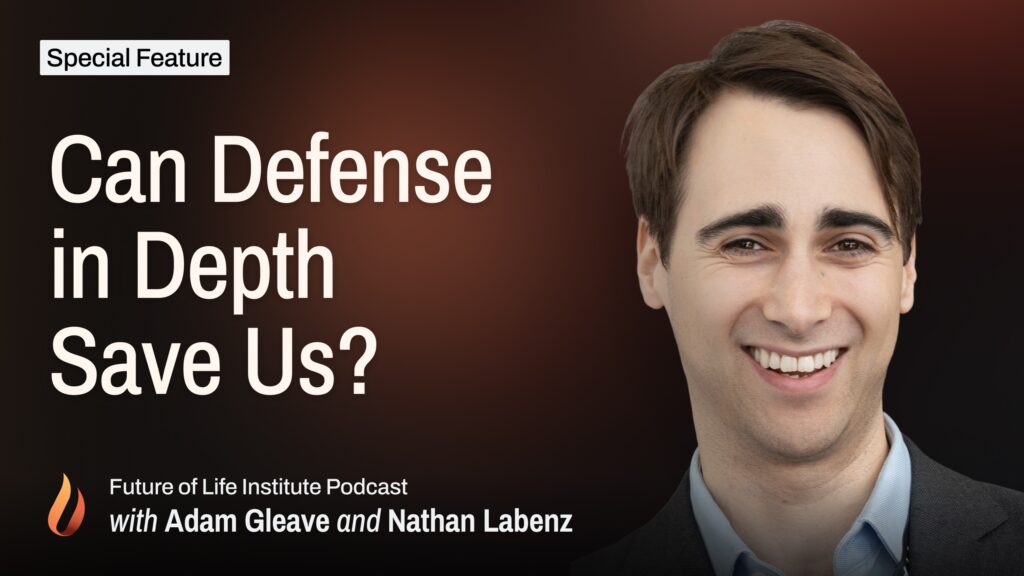
Can Defense in Depth Work for AI? (with Adam Gleave)
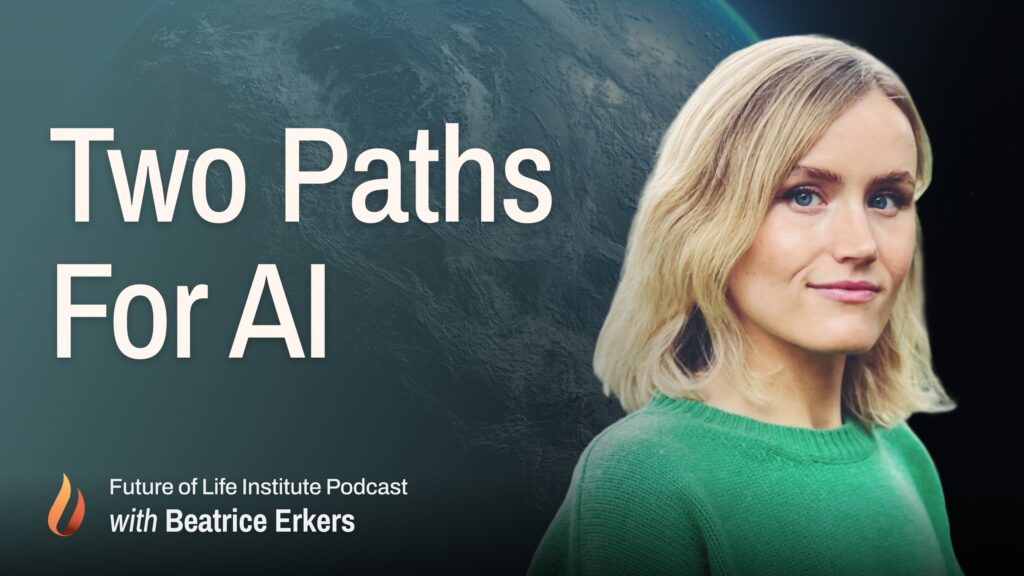
How We Keep Humans in Control of AI (with Beatrice Erkers)
